Chances are, you can’t wait to get a head start on your garden, with longer, brighter evenings and warmer weather on the cards.
One thing that might prove tricky is outdoor furniture. Even if you’re lucky enough to have a garden shed to store items, cobwebs, mildew, dust, dirt and leaves might have soiled soft furnishings – and anything in the open air will have taken a beating.
Sound familiar? Here’s how to give your furniture a facelift.
1. Set the scene
View this post on Instagram
First, have a general tidy-up. “Just as you would inside your home when tackling a little spring clean, clear the clutter,” says style adviser Nadia McCowan Hill.
“A quick brush of the patio or sweep of the decking to remove fallen leaves and general dust and debris will help revitalise the area. Pressure washers come into their own this time of year, for fast action cleaning with impressive results.”
Whether it’s hosing down the walls or mowing the lawn, take this opportunity to think about how your furniture will be framed.
2. Tackle your furniture
Before starting any restoration work, it’s a good idea to give it a thorough clean – this can make a world of difference to furniture that’s gathered dirt during the winter. Use warm, soapy water with sponges and brushes to give your furniture a deep clean.
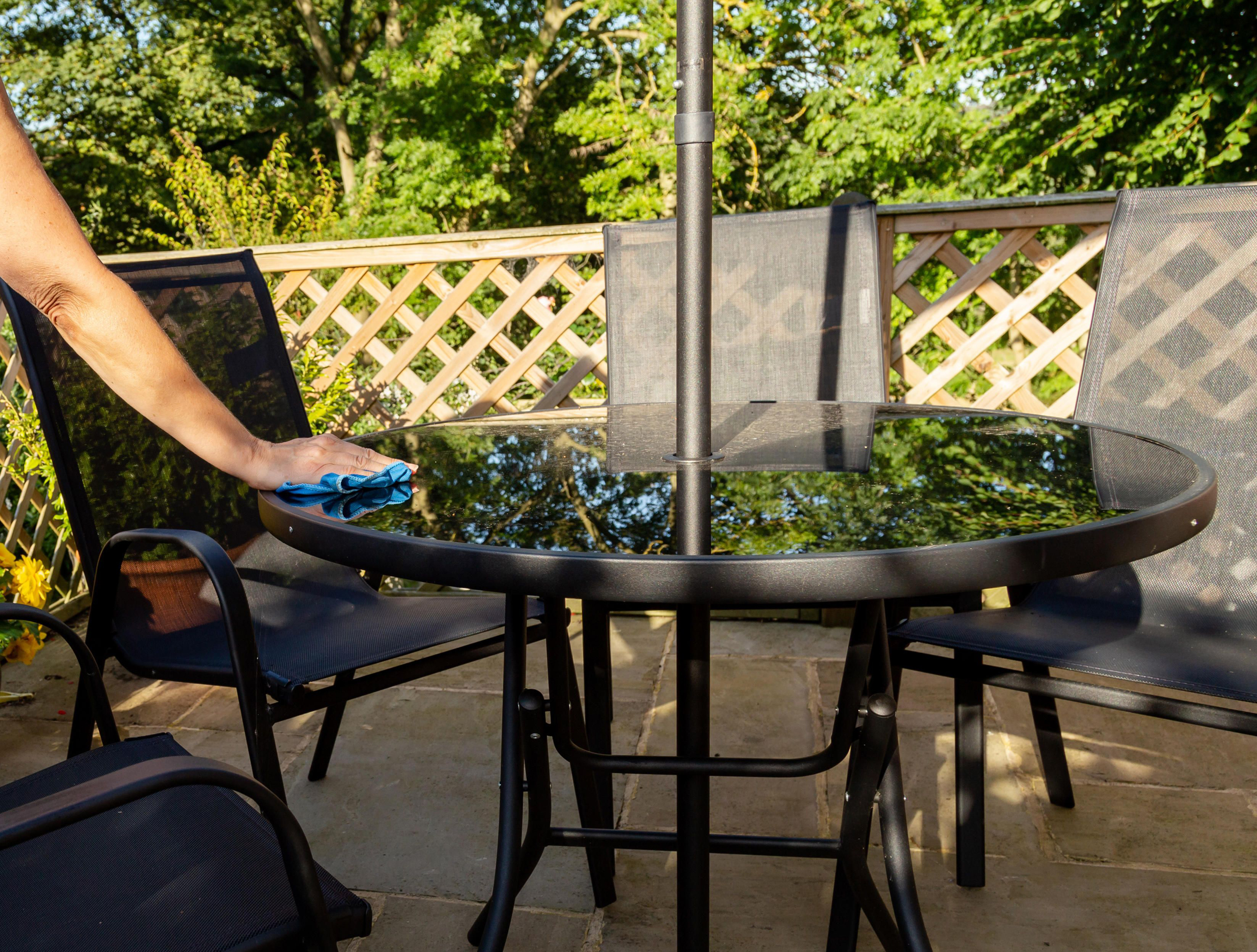
If your furniture is old, make sure the surface is thoroughly cleaned. Wash off any dirt with soapy water or use a pressure washer. Washing with a light bleach and water solution will also help to kill off algae.
For rattan furniture, you can always try dipping an old toothbrush into soapy water to scrub away any dirt, and allow to dry in the sunshine.
Read: What to consider before buying garden furniture
3. Prepare tables and chairs
Preparation is key when it comes to the perfect finish, so before you consider painting your old, tired furniture, sand off any rough patches or loose old coatings that will show or affect the finish.
Wooden furniture may need preserving with a wood preserver. If your furniture is made with treated softwood, remove any surface residue from the pressure treatment process.
4. Take your time with painting
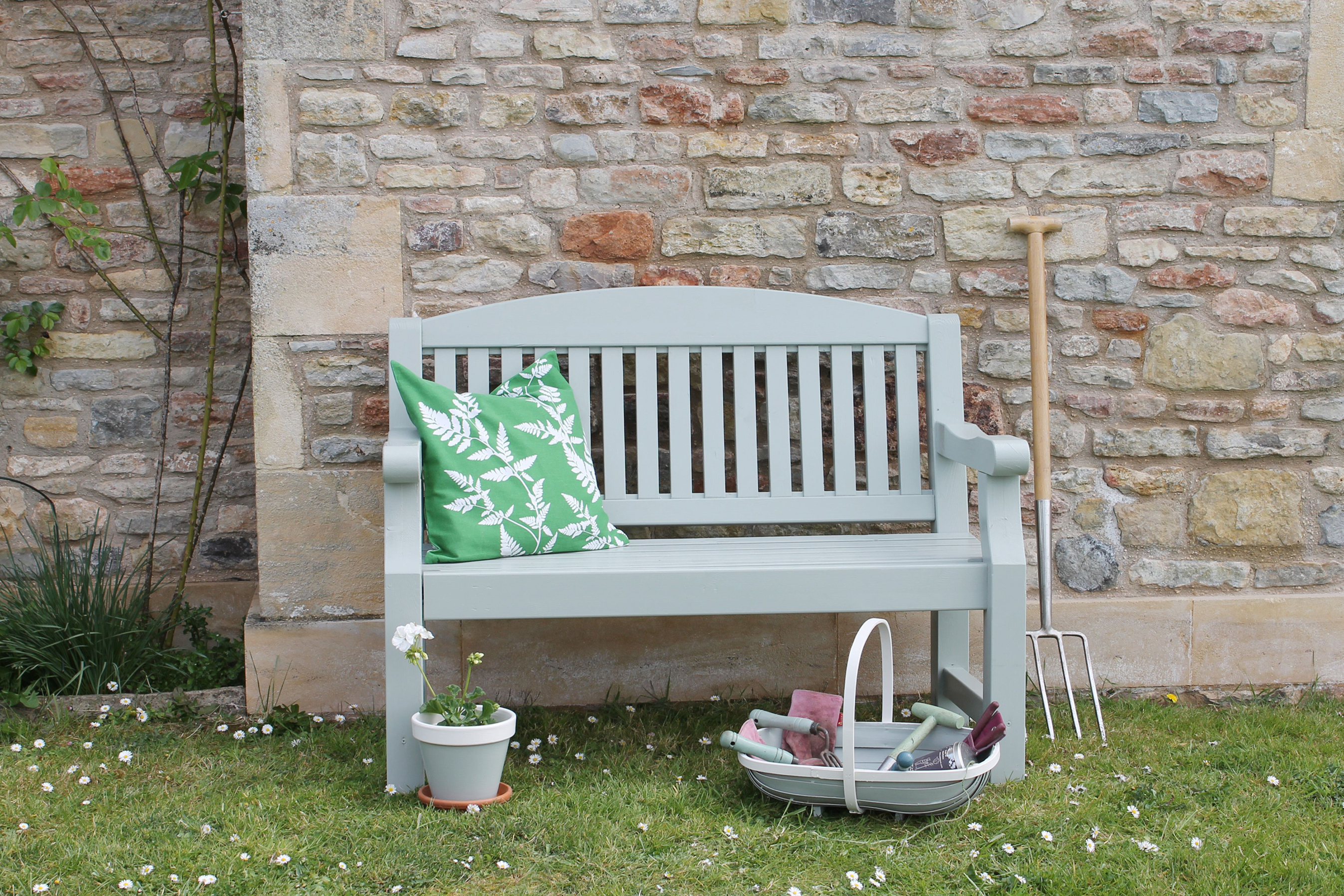
“Don’t rush to start your paint job. Make sure your wood is dry, otherwise coatings won’t fix properly to the timber, affecting the paint’s performance and longevity,” advises Ben Thornborough, co-founder of Thorndown Paints (thorndown.co.uk).
“To ensure the perfect finish, apply a knotting agent or stain-blocking primer to prevent possible tannin staining of the paint coating. However, if you’re a fan of all things natural, don’t worry about it and let nature take its course.
“If there’s any rust on fixings, treat the metal surfaces or use paint with flash rust inhibitor, to stop rust from forming on non-galvanised metal or metal screws and nails (other than stainless steel).”
Read: It’s spring! Time to get a head start on gardening jobs

And before you start painting, Mr Thornborough adds: “Check the weather to make sure rain isn’t forecast for at least 24 hours. This will allow plenty of time for the paint to dry and fix/bond properly.”
5. Get rid of rusty stains
Harsh weather conditions can can take their toll on heavy pieces. The wind, rain and humidity of colder seasons will have likely caused metal to corrode, building a layer of rust on the surface.
Luckily, there are simple home remedies that can remove rust and return your furniture to its former glory. Simply use white vinegar and pour it evenly on the affected areas. Leave it to sit for a while, then wipe away once the product has worked its magic.
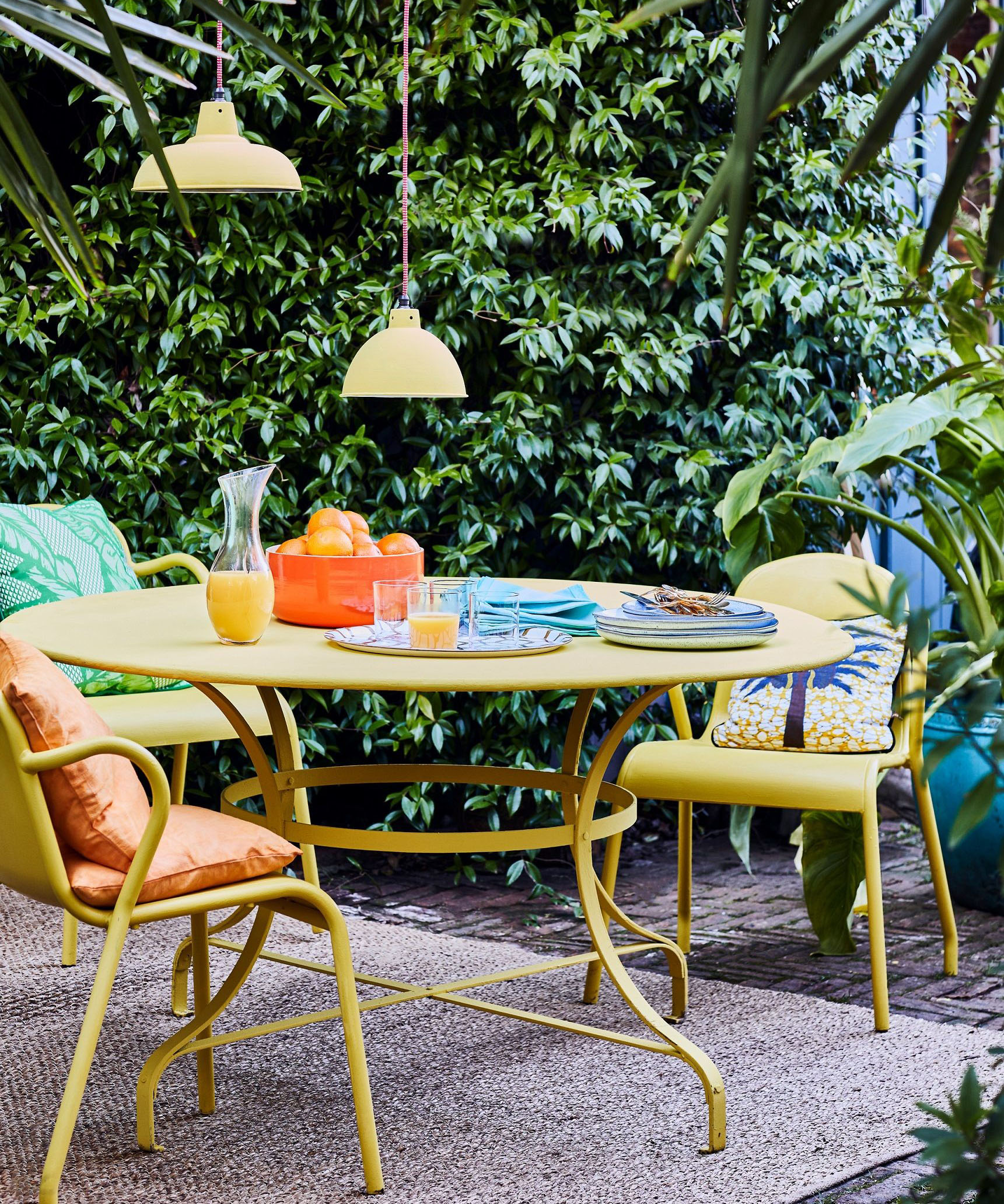
6. Wash cushion covers
Even though they’ve been weather-proofed, soft outdoor furnishings will still need some TLC. As some will have simply picked up a stale smell from being packed away so long.
Wash on a low heat and use a gentle setting to ensure they keep their size and shape, and don’t tumble dry. Use the upcoming sunny weather to let the covers dry outdoors before putting them back on.
7. The final flourishes
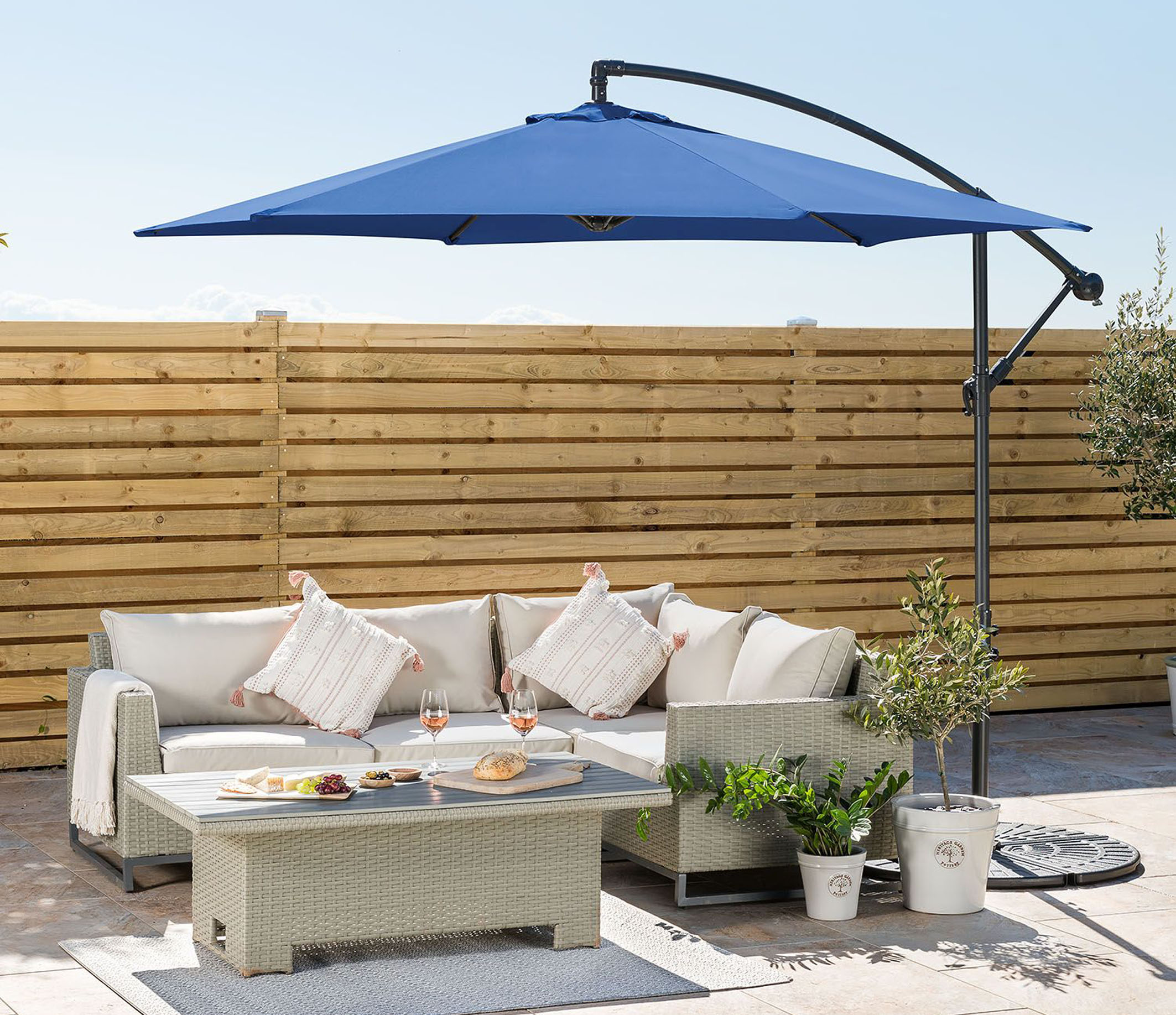
With the recent storms, many parasols might have been damaged but rather than buying new, try buying a fresh canopy to put on an existing frame – a more sustainable option, and a win-win if there’s nothing wrong with the frame.
Read: Seven tips for creating a wellbeing-boosting garden
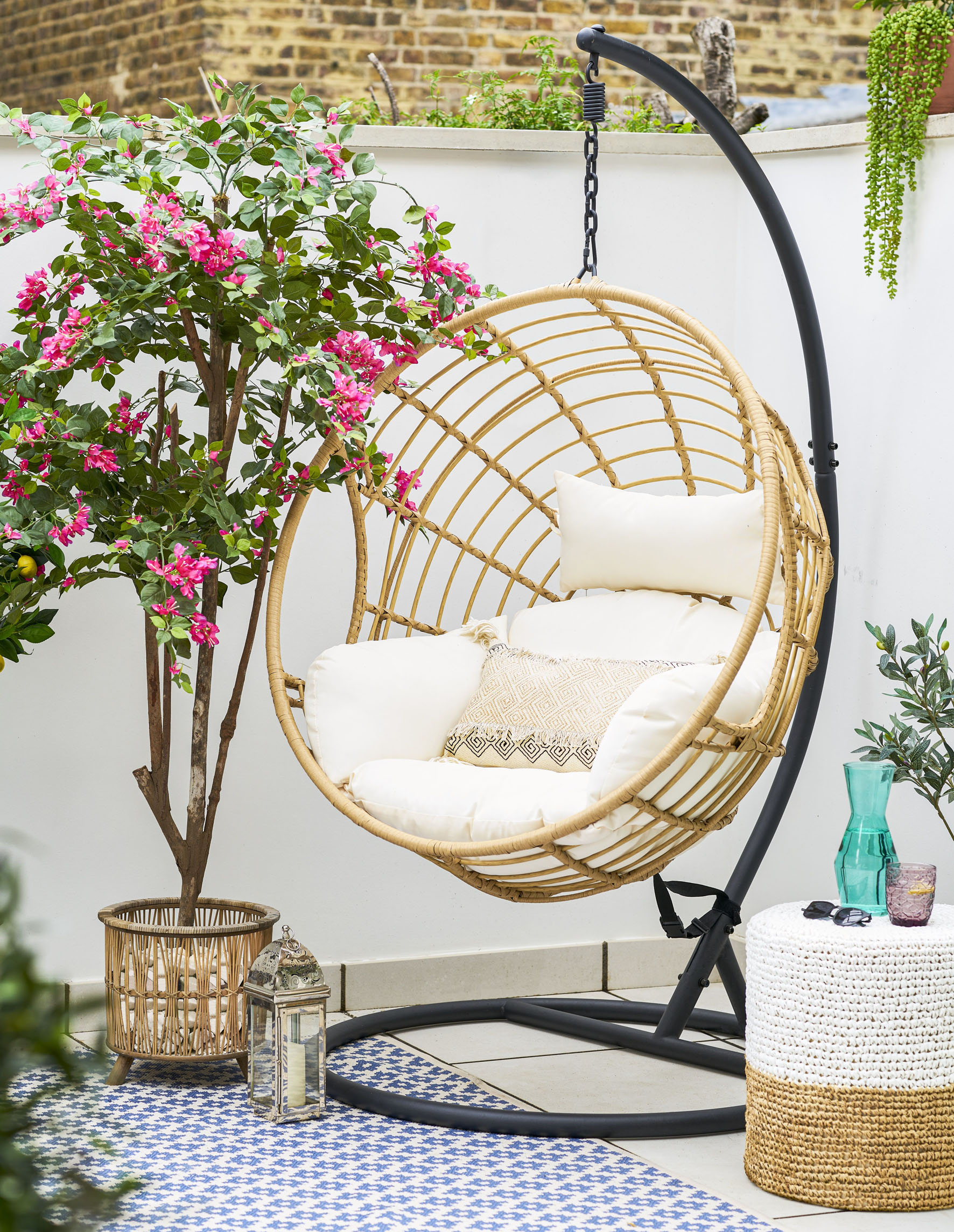
Likewise, a sofa set, bench or hanging chair can be transformed with a cushion update. “A cost-effective way to make an impact, rather than replacing the whole set,” says Ms McCowan Hill. “A different colour or pattern will give existing furniture a whole new look.
“Make a focal point of seating areas with a splash of colour, or choose bright contemporary whites to reflect the sunshine. A few smaller stylish decorative touches, such as outdoor lanterns and a change in plant pots, can make a big difference to the overall finished look.”
How do you get your garden ready for summer? Do you spend a lot of time in your garden? Let us know in the comments section below.
– With PA

